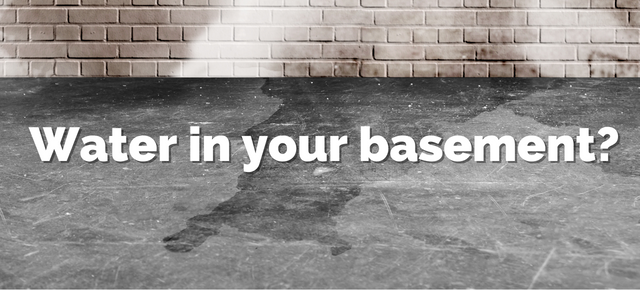Warmer temperatures in the spring are welcomed after a long winter. Along with those rising temperatures, the snow finally melts, and rain washes it all away. Too often, however, the street drains can get clogged and water can back up all the way into your home’s basement. Don’t let a difficult situation get significantly worse by not having the proper insurance coverage in place.

If the damage is significant, the first thing to do is have it professionally cleaned and dried so that no mold starts to develop. After that, the repairs need start. Along the way, the question is who pays for all of this? That’s where insurance comes into the picture, or at least it will if it’s set up correctly.
Not all insurance will cover this claim as it is looked at differently than most other water issues that occur within a home. Because the source of the water issue is external, initially it is excluded from a standard home insurance policy, and coverage; commonly known as “water/sewer back up” needs to be added on to the insurance policy for there to be money available to pay for this claim.
In my experience, most of the home insurance policies I evaluate do have this coverage added, however, I am seeing more policies that were purchased online (without consulting an agent) don’t include it.
Some are not always concerned about water damage and that’s usually because their home is on a hill or is otherwise situated at a higher elevation and water will trickle down away from the house so there shouldn’t be an issue. While that certainly can be the case, keep in mind if there is a clog in the street drainage line then there’s nowhere for it to go but back up.
Beyond just rain and snow melt runoff, water main breaks and manmade clogs, such as the flushed hypodermic needles that got caught in the street line and backed sewage up into five house several years ago, can cause this situation to which you need to be prepared for with quality insurance coverage.
However just having the coverage is only part of the equation as the next factor is whether there is enough money (known as the limit) to pay for the full cost of the repair.
Commonly there’s only a small amount of $5,000 to $10,000 listed for this issue, but if you think about what it would cost for the professional cleanup (typically $2,500 – $7,000) combined with the cost to repair or replace all the damaged aspects of the basement, the cost can be quite significant. From the flooring, to the trim and drywall, to any cabinetry, it gets expensive very quickly. In most situations I recommend at least $50,000 of coverage to best adequately cover the expenses associated with this type of claim.
To confirm that you have this coverage in place, look on your homeowner’s insurance declaration page under the endorsement section and you should see both the water & sewer backup coverage listed along with the dollar limit currently in place. This should be evaluated with your insurance agent and reviewed periodically to make sure the coverage is adequate.
